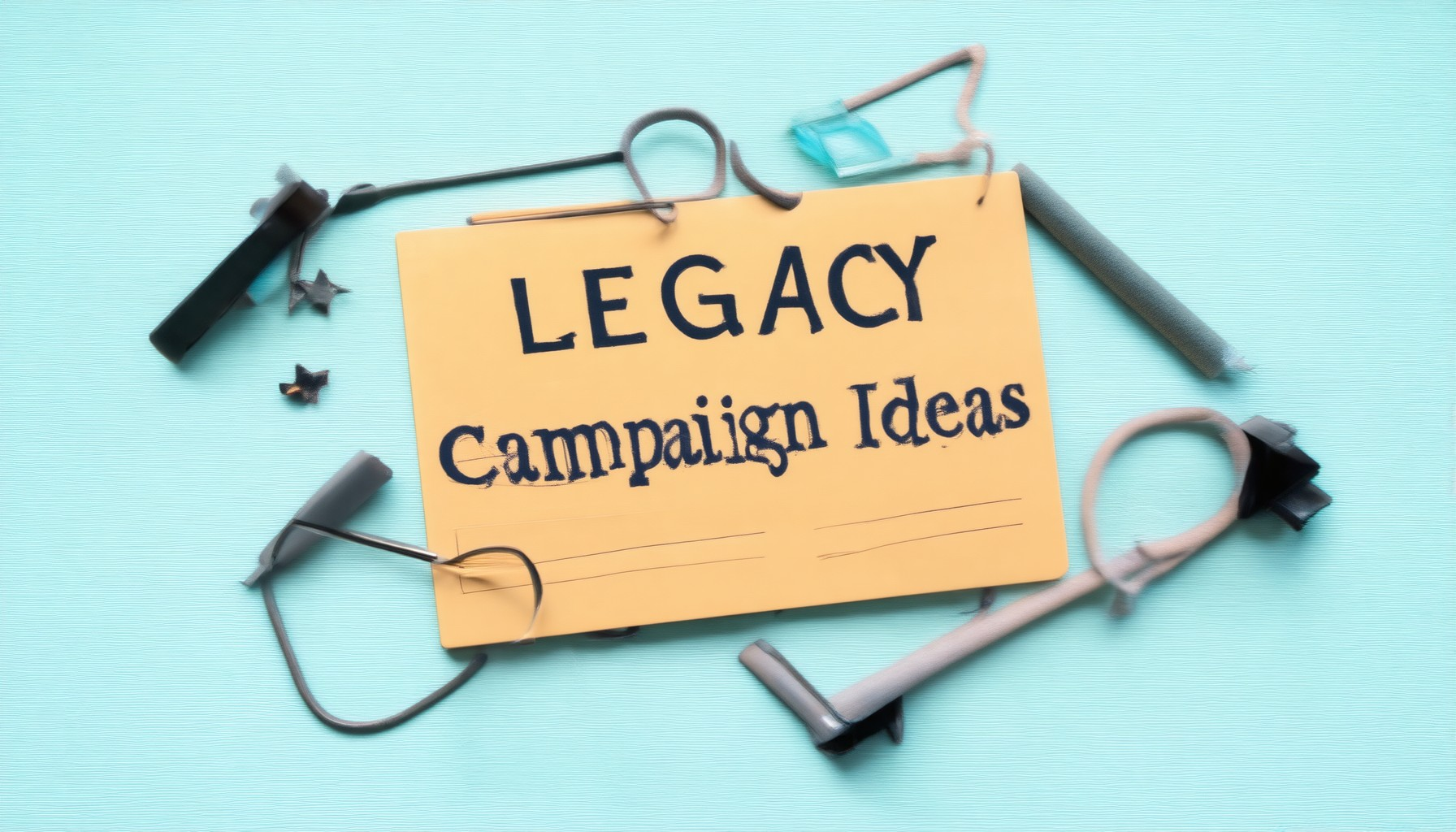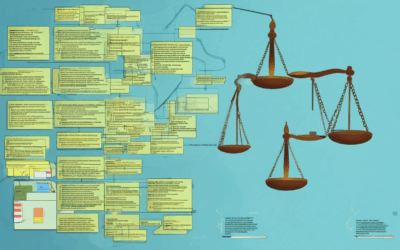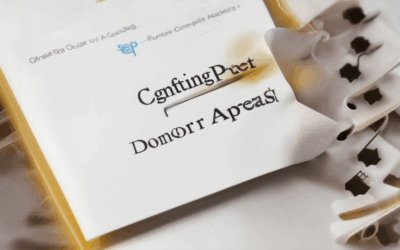Legacy campaigns have long been a cornerstone of effective marketing and fundraising efforts, leaving a lasting imprint on audiences and organizations alike. Whether it’s through brand positioning, customer relationships, or enduring impact, the concept of legacy continues to evolve in ways that resonate deeply with individuals and communities. In this comprehensive guide, we will delve into the intricacies of legacy campaigns, exploring what they entail, how they can be effectively promoted, and the powerful examples that have shaped this timeless approach. From understanding legacy propositions to crafting meaningful legacy gifts, this article serves as your go-to resource for unlocking the full potential of legacy campaigns and their transformative power.

What is a Legacy Campaign?
A legacy campaign is a fundraising strategy focused on encouraging individuals to leave donations to an organization through their will or estate planning. This type of campaign is often referred to as planned giving and involves promoting bequests, gifts of retirement accounts, life insurance policies, and other assets to benefit the organization after the donor’s lifetime.
Importance of Legacy Campaigns
Legacy campaigns are highly effective because they tap into the donor’s commitment to their cause, allowing their contributions to have a lasting impact. These campaigns often yield significant returns, making them one of the most valuable fundraising tools for nonprofits.
Types of Legacy Gifts
- Bequests : Donors can leave a specific percentage or portion of their estate to the organization.
- End-of-Life Gifts : Donors may choose to make gifts during their final days, often motivated by a desire to support causes they care about.
- Retirement Account Gifts : Donors can designate organizations as beneficiaries of their IRAs or 401(k)s.
- Life Insurance Policies : Donors can purchase or rename life insurance policies with the organization as the beneficiary.
Tax Benefits
Legacy gifts often come with favorable tax treatment, as they allow donors to reduce estate taxes and receive immediate financial benefits while they are alive.
How to Implement a Legacy Campaign
- Educate Your Audience : Provide information on how legacy gifts work and their benefits.
- Create a Legacy Giving Program : Develop a structured program with dedicated staff or volunteers to manage these efforts.
- Use Testimonials : Share stories of past donors who have left legacy gifts to inspire others.
- Offer Estate Planning Resources : Provide legal and financial professionals with tools to help donors implement their intentions.
By fostering a culture of planned giving, organizations can secure stable funding streams and build lasting relationships with their supporters. Legacy campaigns are not just about raising money—they’re about creating a meaningful connection between donors and the causes they care about, ensuring their legacy lives on.
Example of a Legacy Proposition
A legacy proposition is a statement that defines the lasting impact an organization aims to leave behind. Here’s an example:
“Preserve the Earth for Future Generations” – A non-profit focused on environmental conservation might use this proposition to emphasize its commitment to sustainable practices and ecosystem protection.
The proposition should resonate emotionally with donors and stakeholders while clearly articulating the organization’s mission and vision. It should also align with the core values of the organization and appeal to the passions of its supporters.
To further enhance the legacy proposition, consider:
- Mission-Aligned Messaging: Ensure the proposition reflects the organization’s primary goals and how it plans to achieve them.
- Donor-Centric Focus: Appeal to the values and aspirations of donors by highlighting the impact their contributions will have.
- Long-Term Vision: Emphasize the enduring nature of the organization’s work and its relevance for future generations.
For instance, an organization working on education for underserved children might phrase its legacy proposition as:
“Educate Tomorrow’s Leaders Today” – Highlighting its mission to provide access to quality education and create opportunities for future leaders.
By crafting a compelling legacy proposition, organizations can inspire greater engagement and support from their audiences, fostering a strong connection between the donors and the cause they care about.
For more insights on refining your legacy proposition, explore resources on Charity Navigator and GuideStar .

How to Promote Legacy Giving
Legacy giving involves encouraging individuals to leave a donation through their will or estate plan. Here’s a comprehensive guide to effectively promoting legacy giving:
- Understand the Appeal:** Highlight the emotional and lasting impact legacy gifts can have on your organization. Share stories of how previous legacy gifts have been utilized to inspire future donors.
- Utilize Success Stories:** Create a library of donor stories showcasing the tangible impact of legacy gifts. These stories can be shared in newsletters, on your website, and during events to illustrate the importance of planned giving.
- Provide Clear Information:** Offer simple, jargon-free resources explaining how to create a legacy gift. Include step-by-step guides, FAQs, and information on how to work with estate planners.
- Create a Legacy Society:** Establish a dedicated group for legacy donors. Offer exclusive benefits, such as special events, recognition in newsletters, and personalized communication, to engage and retain members.
- Highlight Tax Benefits:** Emphasize the financial advantages of legacy giving, such as estate tax reductions and charitable deductions. Partner with tax professionals to ensure accurate and trustworthy information is provided.
- Integrate Legacy Giving into Overall Strategy:** Ensure legacy giving is a key component of your organization’s development strategy. Include it in annual reports, appeals, and donor communications.
- Educate Your Team:** Train staff to confidently discuss legacy giving opportunities. Provide regular updates on successful campaigns and share best practices for engaging potential donors.
- Partner with Professionals:** Collaborate with estate planning attorneys, financial advisors, and tax experts to expand your reach and credibility in the legacy giving space.
- Track and Recognize Contributions:** Maintain records of legacy gifts and publicly acknowledge them in appropriate channels. Use this data to inspire further contributions and track the growth of your legacy giving program.
- Use Consistent Messaging:** Ensure all materials and communications about legacy giving use the same language and branding to reinforce consistency and trust.
- Measure Impact:** Regularly evaluate the success of your legacy giving initiatives. Adjust strategies based on feedback and performance data to maximize outcomes.

Legacy Gift Example
A legacy gift is a donation made through a will or estate plan to support a cause or organization after the donor’s lifetime. One common example is:
- Bequest in a Will : A person can leave a specific amount of money, property, or assets to a charity or nonprofit organization in their will. This type of gift allows the donor to support their favorite cause even after passing.
- Charitable Remainder Unitrust (CRUT) : This is a popular legacy gift option where the donor transfers cash or assets to a CRUT, which pays income to the donor during their lifetime, with the remainder going to charity after their death.
- Donor-Advised Fund (DAF) : In this arrangement, the donor establishes a fund with a charity, makes contributions, and can recommend grants to charities during their lifetime or at their death.
- Life Insurance Policy : Donors can purchase a life insurance policy that names a charity as the beneficiary. The charity receives the policy’s death benefit upon the donor’s passing.
- Retirement Accounts : Designating a charity as the beneficiary of a retirement account, such as a 401(k), IRA, or pension plan, ensures that the remaining funds go to the charity after the donor’s death.
Each of these options allows donors to leave a lasting impact while supporting causes they care about. Legacy gifts are often chosen for their ability to provide long-term support and flexibility in estate planning.
Legacy Example
A legacy example refers to a historical instance or model that demonstrates a previous state of affairs, particularly in the context of nonprofit operations. These examples often serve as a reference point for understanding changes that have occurred over time, such as shifts in fundraising strategies, technological adoption, or operational methodologies.
In the realm of nonprofit support and resource platforms, legacy examples can illustrate how practices have evolved. For instance, prior to the widespread adoption of digital tools, many nonprofits relied on manual processes for donor management, event planning, and financial tracking. These manual methods, though labor-intensive, represented a legacy approach that has largely been replaced by more efficient, automated systems.
One notable legacy example is the transition from traditional fundraising methods to modern, data-driven strategies. Before the rise of online donation platforms, nonprofits depended heavily on physical donation boxes, direct mail campaigns, and in-person events to engage donors. Today, these methods have been supplemented or replaced by digital platforms that allow for real-time tracking, targeted outreach, and global donations.
Another legacy example is the shift in administrative processes. Before the advent of nonprofit management software, organizations often maintained records manually, which could lead to errors, inefficiencies, and delays in decision-making. Modern systems, such as those offered by NPO Expert , provide integrated solutions for donor relationship management, grant tracking, and financial reporting, significantly streamlining operations.
It’s important to recognize that while legacy examples reflect past practices, they also highlight the progress and innovation in the nonprofit sector. Platforms like NPO Expert continue to evolve, offering cutting-edge tools and resources that empower nonprofits to operate more effectively and efficiently.
By examining legacy examples, organizations can gain insights into their historical challenges and successes, ultimately guiding their future strategies and decisions.

What is a Tribute Gift?
A tribute gift is a thoughtful and symbolic gesture given to honor or celebrate someone or something special. It often takes the form of a monetary donation or a tangible item presented during a celebration, such as a wedding, anniversary, birthday, or other significant event. The purpose of a tribute gift is to show appreciation, respect, or love for the individual or occasion being celebrated.
Types of Tribute Gifts:
- Monetary Donation : One common form of a tribute gift is contributing funds to a cause, charity, or organization that holds significance for the recipient.
- Tangible Items : These can range from personalized keepsakes, such as custom jewelry, engraved plaques, or photo albums, to larger gifts like vehicles, real estate, or artwork.
- Event Contributions : In some cases, individuals may contribute to the overall cost of an event, such as a charity auction or a themed celebration.
Examples of Tribute Gifts:
- Weddings : Guests may choose to give a cash gift or donate to the couple’s future home or honeymoon fund.
- Anniversaries : Partners or family members might present a gift symbolizing their commitment or appreciation.
- Charitable Events : Attendees at fundraisers or galas often make contributions to the benefiting organization.
Considerations:
- Personalization : Tailor the gift to reflect the recipient’s interests, hobbies, or personality.
- Significance : Choose something that carries sentimental value or aligns with the recipient’s values.
- Timing : Present the gift during the celebration or event to maximize its emotional impact.
By thoughtfully selecting a tribute gift, you can create a lasting memory or support a cause that matters deeply to the recipient.





0 Comments